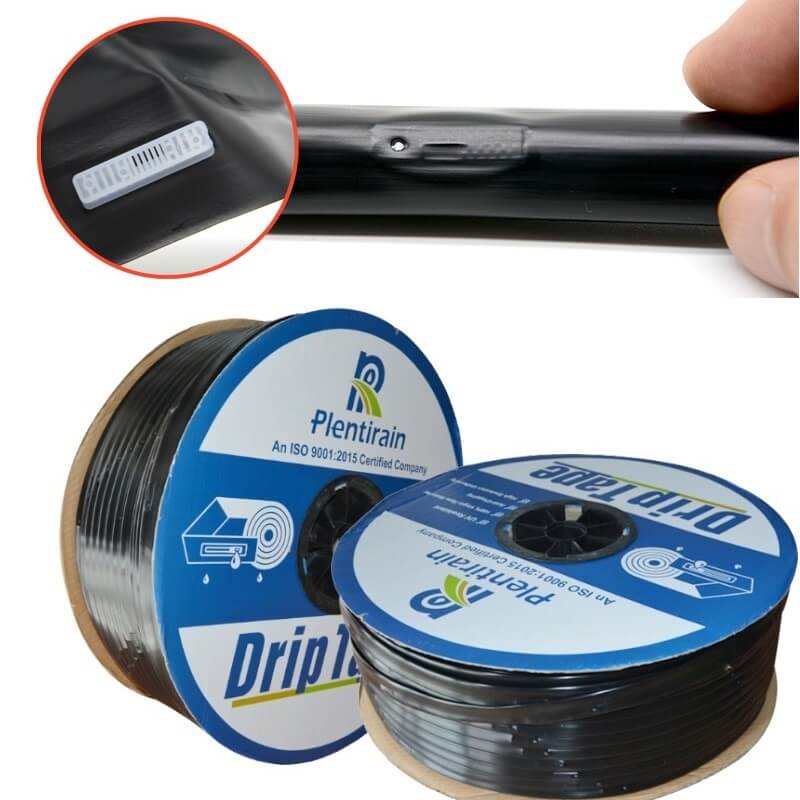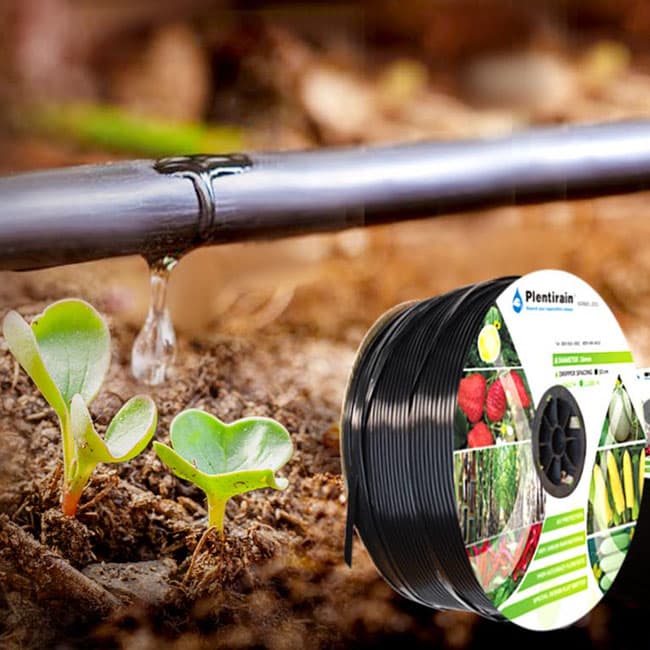In terms of different growth stages of crops, irrigation mainly includes pre-seeding irrigation, seedling irrigation, growth period irrigation and winter irrigation, etc. In terms of water-saving irrigation methods developed to the present stage, it is mainly divided into ground irrigation, scientific irrigation and so on.
Scientific irrigation includes modern irrigation methods such as drip irrigation, micro spray irrigation, seepage irrigation and sprinkler irrigation. It’s necessary to make reasonable design according to the water demand characteristics, growth stage, climate, and soil conditions of the corresponding plants. This kind of method can achieve local precise irrigation. In addition to being used to supplement soil moisture and meet the needs of plant growth, it can also dissolve fertilizers and pesticides in water, which can be combined with modern fertilization devices such as fertilizer pump for fertilization operations. Soil alkalization can also be avoided. As for soils that have already been salinized, we can improve the soil by flushing soluble salts out of the soil with irrigation.
In addition, scientific irrigation can also play a role in preventing fruit trees and vegetables from frost, preventing damage from dry and hot winds, and preventing soil erosion by wind. So what kinds of water-saving irrigation are suitable for your crops? Let’s take a look.
Drip irrigation is a method of irrigation in which the water and nutrients required by crops are evenly and slowly dropped into the soil of the crop root zone through a pipeline system and a dripper installed on the pipe. Drip irrigation does not damage the structure of soil, It is suitable for crop growth. It is a water-saving irrigation method. The main feature of drip irrigation is that the irrigation amount is small, and the hourly flow rate of the dripper is 2-12 liters.

Therefore, the duration of one irrigation is long, and the irrigation cycle is short, which can achieve the irrigation with small water frequently. The required working pressure is low, which can accurately control the irrigation amount, and ineffective inter-plant evaporation can be reduced, without causing water waste.
Compared with other irrigation methods, drip irrigation has the following characteristics:
(1) Low evaporation loss;
(2) Locally moist soil, water saving;
(3) Automatic control can be carried out based on the growth characteristics of crops;
(4) It can be combined with irrigation, fertilization, and pesticide application;
(5) Not solidifying the soil and changing the root environment of crops;
(6) Due to timely and appropriate irrigation, the effect of increasing yield and quality can be achieved;
Common irrigation equipment: maze drip irrigation tape, patch drip irrigation tape, embedded cylindrical drip irrigation pipe, drip arrow irrigation, etc.
Suitable crops: strawberries, cucumbers, tomatoes, sweet peppers, chili peppers, eggplants, zucchini, winter melon, watermelon, melon, bitter gourd, luffa, zucchini, string beans, anal beans, kidney beans, kidney beans, potatoes, water radish, ginger, etc.
Micro spray, also known as droplet spray irrigation. Micro spray technology is more water efficient than sprinkler irrigation. Due to the small size of fog droplets, its adaptability is greater than sprinkler irrigation, and it is suitable for the entire process of crops from seedling stage to growth and harvest stage. It uses a low-pressure water pump and pipeline system to transport water. Under the action of low-pressure water, it sprays water into the air through a specially designed micro atomizing nozzle, and disperses it into small droplets, which are sprayed on the branches and leaves of crops or the ground under the canopy.
It is a irrigation method, abbreviated as micro spraying. Micro spraying can not only increase soil moisture but also increase air humidity, playing a role in regulating microclimate.
Advantages of Micro Spray Irrigation:
1.Water saving: Since micro spray irrigation is local irrigation, deep leakage and ground evaporation can be reduced. Generally, it saves 1/3~1/2 water compared to surface irrigation and 15%~25% of water compared to sprinkler irrigation.
2. Energy saving: The micro spray irrigation system adopts low pressure operation, which can reduce the energy consumption of the pump station. The general working pressure is 50~150 kpa, which is lower than that sprinkler irrigation.
3. Uniform irrigation: Micro sprinkler irrigation is precise irrigation, and the entire system can effectively control the flow rate of each emitter, with an irrigation uniformity of up to 80%~90%
4. Yield increase: Micro sprinkler irrigation can timely and appropriately supply water and fertilizer to the root zone of crops, keeping soil moisture at the optimal level, making it easier for crops to absorb water and nutrients; Micro spraying can also regulate the microclimate in the field, creating the best growth environment for crops. Compared with other irrigation methods, it can generally increase yield by about 30%.
5. Strong adaptability to soil and terrain: suitable for both cohesive and sandy soils. Due to being a pressure pipeline for water transportation, it is suitable for both flat and hilly areas.
6. Under certain conditions, brackish water resources can be utilized: Practice has shown that using brackish water drip irrigation can still allow crops to grow normally and achieve higher yields. But in arid and semi-arid areas, fresh water should be used for salt washing at the end of the irrigation season to avoid soil deterioration.
7. Labor saving: The micro sprinkler irrigation system does not require leveling the land, opening ditches and borders, and can implement automatic control, greatly reducing the labor volume and intensity of field irrigation.
Limitations of Micro Spray Irrigation:
Due to the small water outlet, the dripper is prone to blockage. Therefore, micro irrigation has strict requirements for water quality, which should generally be filtered and, if necessary, precipitated and chemically treated.
Commonly used watering equipment: inverted micro spray, ground inserted micro spray.
Suitable crops: leafy vegetables. Including celery, scallions, green garlic, Chinese toon, Chinese cabbage, mushroom aroma, dried coriander, spinach, foraging vegetable, lideng, shepherd’s purse, etc. Rape, leeks, etc.
Micro spraying tape is a new type of micro irrigation equipment, also known as “sprinkler tape”, “micro spraying tape”, “spray tape”, “spray pipe”, “porous hose” and so on.
The working principle is to send water under pressure to the field through the water delivery pipe and the micro-nozzle tape, and through the water outlet hole of the micro spray tape, under the action of gravity and air resistance, forming a drizzle-like spraying effect.
The water outlet holes of the micro stray tape mostly adopt the multi-space grouping mode, and are arranged according to a certain distance and certain rules, such as: oblique five-hole, oblique three-way, transverse three-hole, left and right hole and no hole, etc. The water outlet holes are generally drilled by mechanical drilling, starting drilling and laser drilling, with a diameter of 0.1-1.2mm and a circular shape. The main models are N30, N45, N50, and N65.Advantages of micro spray tape:
1. The micro spray tape has low water pressure and a large irrigation area, which can reduce the cost of supporting equipment.
2. The installation and use of micro spray tape are simple and convenient: they have a long length and light weight, and are equipped with specialized micro spray belts for direct passage and bypass pipes. The installation and disassembly are simple and convenient, which can save a lot of labor.
3. Fertilizer can be applied at the same time
4. Micro spray tape has low investment cost and good irrigation effect, and the application of micro spray tape irrigation is an inevitable trend in the development of modern agriculture.
Commonly used irrigation equipment: micro spray tape
Suitable crops: wheat, barley, corn, rice, cotton, soybean, peanut, sesame, sorghum, potato
Plain or mountain fruit trees, tea garden, field, flower nursery and greenhouse crop irrigation.

